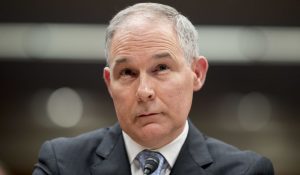By Ariana Jessa
In the last few years, anti-immigrant rhetoric in the United States has risen above previous levels, to the point where immigration has become a topic frequenting not only inaccessible political discussion, but also household discourse and public forums. Whether or not you are an immigrant yourself, immigration policy has ramifications that surpass those simply applying for visas. This article will seek to discuss how immigration rhetoric in politics has affected both domestic and foreign workers, and will analyze the long-term ramifications of the immigration policies implemented today.
In recent months, we have seen the Trump Administration make it significantly more difficult for companies and individuals to obtain H-1B visas, the class of visa necessary to gain permission as a foreign citizen to work in the United States. These visas generally last three years and have been relatively easy to attain in the past, especially in key immigrant-sourced jobs such as technology and “preferred professional” occupations, which could be any professional occupation that is currently undersupplied by the American labor force. The H1-B visas have primarily been controversial because they provide a pathway to a green card, or a naturalized U.S. residence. As anti-immigrant rhetoric increases and the uncertainty around the U.S. job market influences domestic workers’ fear of unemployment, these concerns have amounted to policy change by the current government. The Trump Administration has now implemented statutes that require more paperwork and detailed documentation, specified tasks for three years in the future, as well as the allowance of shorter durations of employment.
Although these policies don’t appear to be explicitly pernicious on their own, when compounded, they make it extremely difficult for companies to undergo the sponsorship process. Previous to these executive orders, information technology companies in America hired foreign workers simply because their capacity for production was significantly higher, and the extra cost to accumulate and retain one worker was worth the extra productivity that the companies would gain over the duration of their employment. However, these policies reduce the number of these visas in two significant ways.
Firstly, because these policies make it very difficult and risky for companies to hire foreign workers, companies will be far less likely to file foreign applications to hire more foreign workers overall. This results in a significant decrease in the number of foreign workers in necessary and flourishing industries and in the restriction of the ability for individuals who desire work in the United States to do so. This has an impact not only on alien citizens looking to move to the United States, but also on current international students of U.S. universities, who are looking to either stay or to obtain temporary work in the country.
Secondly, even if a large firm is prepared to overcome the bureaucracy of the extra paperwork, the likelihood of a shorter visa makes the worker much less profitable as a company “investment.” This is because the worker’s short time in the company is less likely to repay the company’s “investment” than it would have been if the worker’s visa could guarantee employment for a longer duration of time. This has ramifications on the number of foreigners hired overall.
However, there are also more overarching ramifications for these policies, and as we approach 2050, we are likely to see a shift in the United States’ dominance in a variety of industries. This is for two primary reasons. Firstly, with a decreased number of hired foreign workers, firms will simply be less productive. There is a limited supply of U.S. citizens looking for jobs in STEM fields, primarily a result of the U.S. education system’s value on humanities’ proficiency over scientific literacy (but that’s another article entirely!). Large tech companies, such as Google or Microsoft, with remarkable surplus in both employees and capital, expend a significant amount of their budgets on research and development in the hopes of pushing forward progress and innovation of our entire society. These fields, however, are often the ones that require the most long-term commitment with little guarantee of returns. As such, when a firm becomes less productive, it will first look to cut costs in its research and development. Given that most of the innovation in U.S. society stems from private companies, not unlike these tech tycoons, this decrease in research would stifle progress significantly. This decrease has significant implications for what the world may look like in 2050, as we may see the role that America plays in innovation decrease.
In addition to this effect, if these immigration policies escalate further, it is likely that international businesses with headquarters currently in the United States are simply going to relocate their main branch of operations in order to surpass the protectionist sentiments and constraints that these policies promote. While these relocations of previous U.S. investments to the foreign market is uniquely detrimental to the economy and is unlikely to be a desirable outcome for any government, these relocations would be especially detrimental for our current government, as its main platform is economic progress. Thus, in 2050, we may see a world where countries such as China and Japan take the lead in furthering innovation while the United States sits idly by without investing in international talent.






Be First to Comment